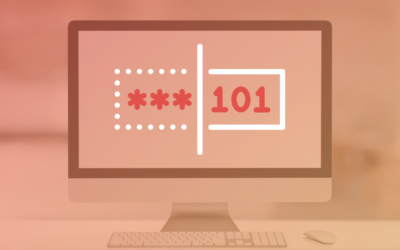“We don’t need brand messaging, just a logo, thank you!” When we hear this, we throw up a yellow flag. We’ll follow up with, “Great! Do you have any brand message materials you can share? This will help ensure all stakeholders are on the same page with the direction of your nonprofit’s visual identity.”
Crickets.
That’s because for a lot of nonprofit organizations, brand messaging is a nebulous thing. Yes, your mission, vision, and values are part of your brand message. But your brand message is much more than those three things.
Your brand message is the soul, voice, and heart of your brand. Through a clear and consistent brand message, people understand what you do, why they should support you, and how they can make a difference with you.
It tells them what matters to you and builds authenticity and trust — because what you say on Monday is the same exact thing you’re saying on Friday. Your language may change but the intent, the meaning, and the care behind it does not. And that is what resonates with donors, clients, volunteers, board members, so on.
Why is brand messaging so important?
When you have this universal truth about your nonprofit, it ensures that your brand is consistent across the board: visually, tonally, emotionally. It makes it easier to craft a visual identity. It makes it easier to write compelling web copy and engaging social media captions. It makes it easier to find the inflection point of a fundraising campaign while holding true to your mission, vision, and values. In short, it makes it easier to do you full-heartedly.
The good news is as a not-for-profit organization, you have one piece of your brand message together: your mission, vision, and values! And many of your supporters likely feel emotionally connected to you because of your mission, vision, and values. So yay for that!
But what language do you have that speaks to your audiences directly? That tells them you understand their pain points and are the right organization to solve their problem(s)? Think of it this way: if you can’t clearly explain what you do and how, it makes it that much harder to gain traction and support for your efforts.
Hone in on what makes you stand out and why — doing so helps you better explain why people should use your organization. And once you have that clarity of language, use it as the foundation for all of your communications.
How to craft a nonprofit brand message
Start with your stakeholders. They’re the ones that are speaking up for you, good or bad, on a daily basis. What is it that they’re saying? Are there any common themes or threads? What insights do they have about your organization that you may not have had the opportunity to uncover in day-to-day conversation?
Next, think about your language: are there any phrases or words that regularly come up throughout your organization? For example, if multiple stakeholders use the same phrase, that might be something to hang onto.
From there, ask: who are your key audiences? As a nonprofit, donors are a given — but what incentivizes an individual donor may be very different from what incentivizes a corporate or foundational donor. What message do you need to get across to each constituency? Apply that same line of thinking to each audience.
As you start to answer these questions, you’ll start to identify more elements of your brand message: your purpose — aka what you do (not to be confused with how you do it.) Your position — what makes you stand out. Your personality — the human characteristics identified with your organization. And your perception — how you want to be perceived by your audiences.
We call these your brand pillars.
If your messaging were a house, your pillars are the foundational supports holding it up. Each one is important on its own, but together, they create the full picture of your brand. When crafting language to talk about your nonprofit on your website, in social media posts, one-pagers, fundraising collateral, etc., you can use your brand pillars as bold statements on their own or expand upon them to create new copy, such as a boilerplate “About” statement or messaging by audience. At minimum, you should have an “About” statement!
Elements of a brand
This entire time we’ve been talking about brand messaging. But there are other elements of your brand that are important too! The idea is that the visual works with the written with the oral so everything looks, feels, and sounds cohesive and representative.
Going back to that yellow flag example above, a shared brand message means all stakeholders are on the same page about what the brand sounds like and feels like. That gives us much clearer direction to conceptualize what your brand looks like. It helps us pinpoint a color palette. It helps us brainstorm logo marks. It helps us narrow down typography options. And it helps us create icons and graphic details to support your brand. All of these elements go into crafting your visual identity.
Bonus: with that unified brand message in hand, the process of creating a logo becomes much smoother: fewer rounds of stakeholder dissension, discussion, and requests for edits, which could lead to scope creep. It also lays the groundwork for updated website copy, which is much easier to write because you have those pillars and key messages to pull from!
Before starting any nonprofit rebranding exercise, start by asking: does our messaging reflect who we are today and where we’re going? If it doesn’t, that should be your first step before going any further. With that said, we know how daunting it can be! Fortunately, we love shepherding organizations through the various rebranding phases: messaging, visual identity, and website. Our goal is that by the end of our work together, you’ll say, “Yup, that sounds, looks, and feels exactly like us.”
Let’s make it happen — contact us today!



